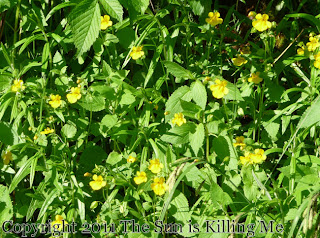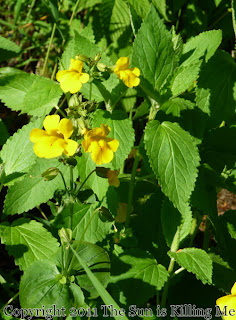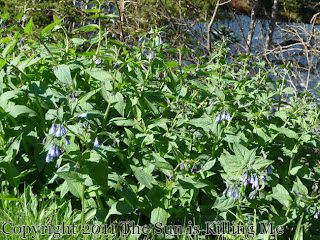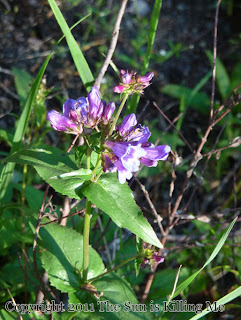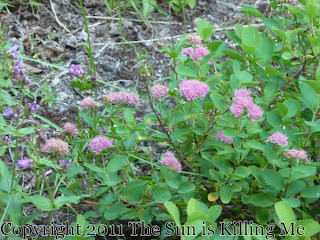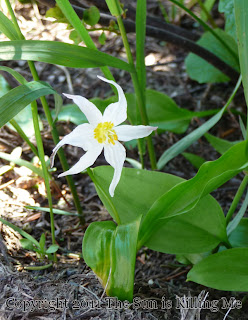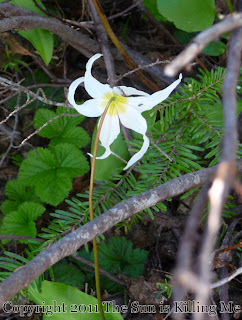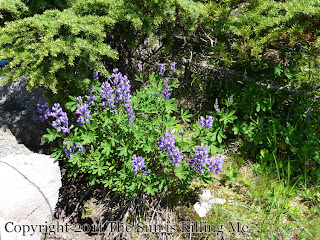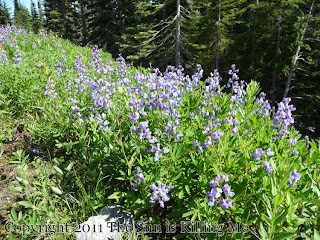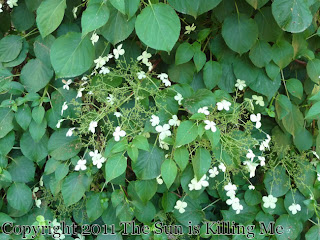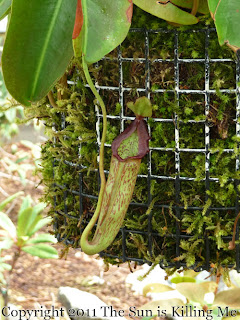I would guess this tree along the trail is around 800-900 years old as we had seen one about the same size earlier in the day marked as 850 years old:
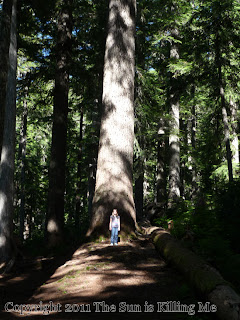
Ferns cover the slopes:

These are just unfurling their new fronds:

Closer:
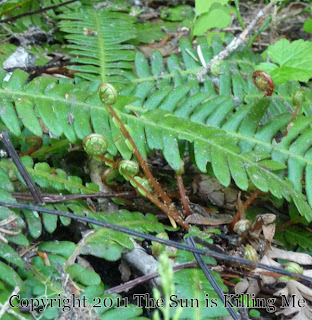
But even in this dense woodland, there are wildflowers. Vanilla Leaf grows under the thick canopy:

What I am pretty sure is Pacific Coralroot was just starting to shoot up from the earth. It belongs to the orchid family and has very small, purple flowers on slender stems. It is very easy to walk right past these on the trail without noticing them:

Pioneer Violets were everywhere along the trail:

Closer:

And there was still the occasional Trillium or two in bloom:

Many streams make their way down the mountainside resulting in breaks in the dense vegetation that allow for many wildflowers to grow. It was along these streams that I saw gorgeous smatterings of Jeffreys Shooting Stars (Dodecatheon jeffreyi). I simply LOVE these wildflowers!:

Also found here were Marsh Marigolds:

And stands of salmon berries in bloom. Hummingbirds LOVE these flowers, by the way. We had these in our garden when I was growing up and the hummers would go wild over the blooms:

In other open areas, where the sun was able to sneak in a bit you will find Bunchberries or Ground Dogwood. These were also a favorite of mine growing up in our Pacific Northwest garden:
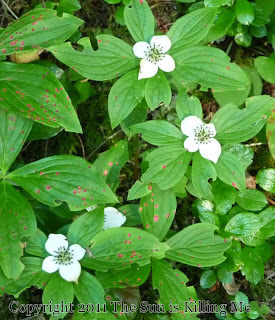
And the always fabulous Columbia Tiger Lily. These were hard for me to photograph. My little point and shoot did NOT like the orange on green background in the low light of the forest:
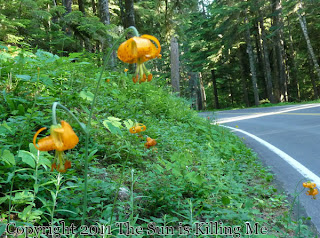
Closer:

Both the Tiger Lilies and Bunchberries were growing amongst the native Heuchera (Heuchera-glabra):

And again you will see Vanilla leaf here also growing with the Heuchera:

You will notice the last couple of photos were taken by the road, but to see most of the woodland wildflowers, you really do need to get out and hike some trails. The best flowers are back in a little way. You really don't have to hike that far in. Just a mile or so will do. And most tourists won't walk more than about a hundred yards or so in (really, we are a very lazy nation), so once you walk down the trail a bit, not only do you get to see more wonderful flowers, but you get the forest mostly to yourself. :)





